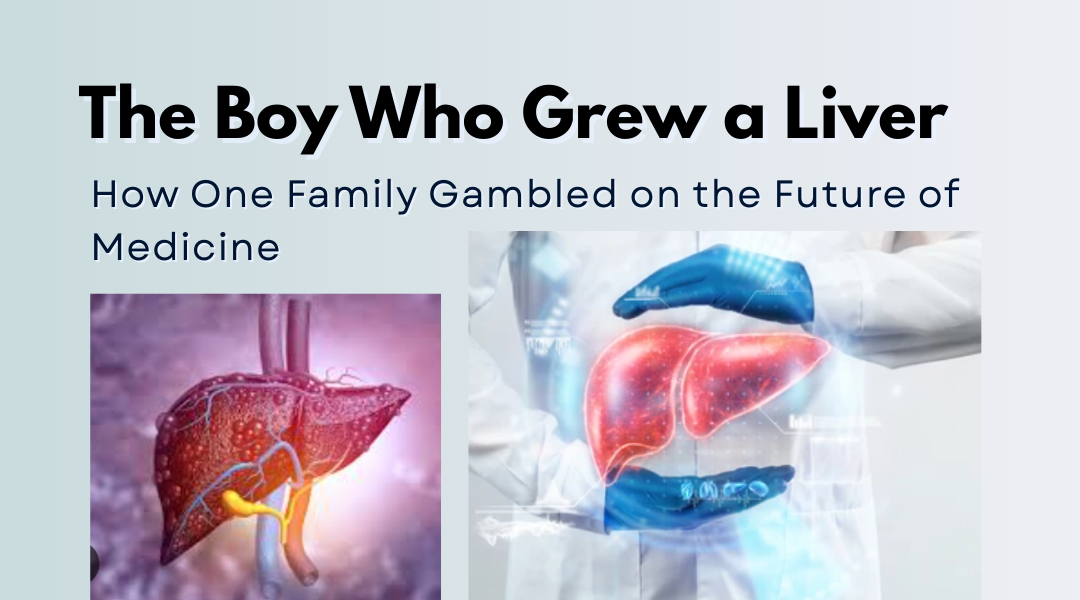Prologue: The Brink of the Impossible
It was the kind of phone call no parent ever wants to receive. “There’s nothing more we can do.” Ten-year-old Lucas Johnson’s liver was failing, chewed up by a disease so rare most doctors had only read about it in textbooks. The transplant list was a death sentence—he’d never make it to the top in time. His parents, Sarah and Mark, had exhausted every option. Until a woman in a white coat walked into Lucas’s hospital room with an idea so audacious it sounded like something from a movie.
“What if we printed him a new one?”
A Mother’s Choice, a Doctor’s Gamble
Dr. Elena Martinez wasn’t a fame-seeker. She was a scientist who’d spent fifteen years in labs, watching bioprinting evolve from a pipe dream to something that could—theoretically—save a life. But theory and reality are different beasts. No one had ever implanted a fully printed organ into a living person. The risks were terrifying: Would the cells hold? Would his body reject it? Could it kill him faster?
Sarah Johnson remembers the moment the offer landed. “It felt like choosing between jumping off a cliff or watching my son drown. Either way, we were out of time.”
The Secret Lab Where Miracles Are Made
The procedure wasn’t as simple as hitting “print.”
- The Cells: They scraped a few surviving liver cells from Lucas’s biopsies, then multiplied them in a nutrient-rich broth. “Like farming, but for human tissue,” one lab tech joked grimly.
- The Blueprint: A 3D scan of Lucas’s original liver mapped every vessel, every duct. The printer would follow it like a baker piping frosting—except one misplaced droplet could mean disaster.
- The Ink: The real magic was in the bioink, a gelatinous cocktail of living cells and structural proteins. Too stiff, and the organ wouldn’t function. Too soft, and it’d collapse like a deflated balloon.
Meanwhile, lawyers and ethicists argued in windowless rooms. “This isn’t just medicine—it’s a precedent,” warned one FDA reviewer. But when a child is dying, bureaucracy moves faster.
The Night Everything Almost Fell Apart
The surgery itself was the easy part. The real terror came 72 hours later, when Lucas’s skin turned yellow again. The organ was failing.
“We’d missed something,” Martinez admitted later. “The printed liver worked in the lab, but a body isn’t a petri dish.” His immune system was attacking the new tissue, despite it being made from his own cells. Panic set in. Reporters camped outside the hospital, already drafting obituaries alongside “breakthrough” headlines.
Then, a Hail Mary: an experimental immunosuppressant cocktail, tweaked in real-time by an AI analyzing Lucas’s bloodwork by the minute. “We weren’t just treating him—we were inventing the treatment as we went,” said Martinez.
The Photo That Changed Medicine
Three months later, Lucas walked out of the hospital holding a model of his old liver in one hand and the new one in the other. The side-by-side image went viral: one shriveled and scarred, the other pink, perfect—alive.
But the celebration was messy. Critics called it reckless. “You don’t experiment on children!” shouted a bioethicist on CNN. Others saw darker implications: “If this costs $2 million, who else will get to cheat death?”
Martinez knew the backlash was coming. “Every medical revolution starts with someone saying, ‘You can’t do that,’” she told Wired. “The question isn’t whether we should—it’s how we make sure we don’t only do it for the Lucases of the world.”
The Ripple Effect
Today, Lucas is 16. His liver is still working. And the “Martinez Protocol” is used in 11 countries, though access is still a battleground.
- For Families: The bioprinting waiting list is now 1,200 names long. Most are kids.
- For Big Pharma: Companies are racing to patent bioink formulas, turning human cells into a corporate commodity.
- For Ethicists: The “Lucas Case” is taught in universities now—not just as science, but as a lesson in how desperation bends the rules.
The Unanswered Question
At a medical conference last year, an audience member asked Lucas if he ever wonders about the liver that wasn’t his. He paused. “Sometimes I think… is this thing inside me mine? Or is it, like, a really advanced car part?” The room laughed, but the tension lingered.
Because that’s the real frontier now—not the printing, but the meaning. When we start building bodies like machines, what does that make us?
